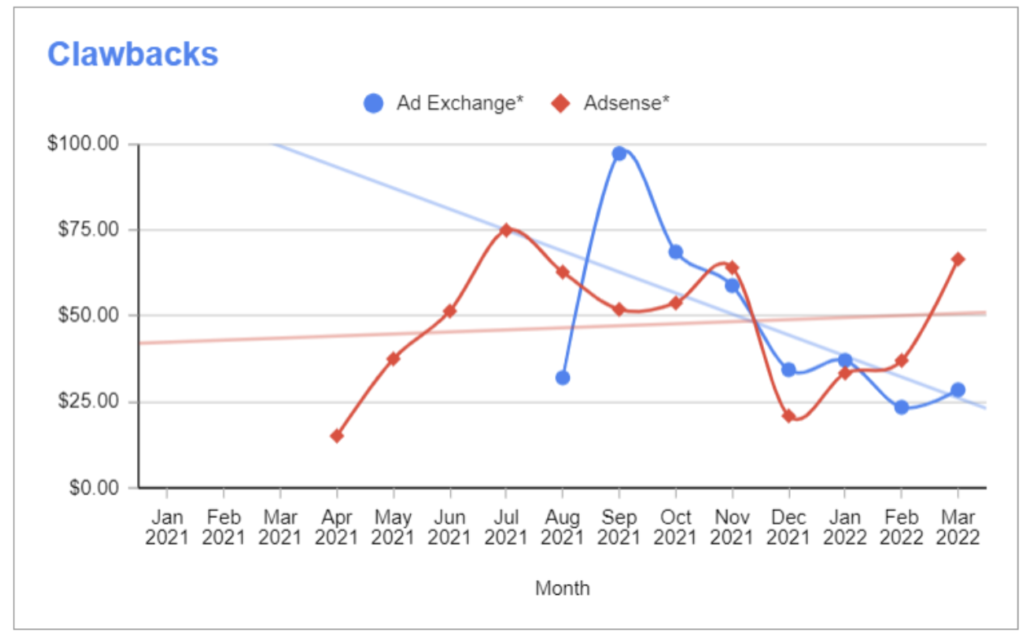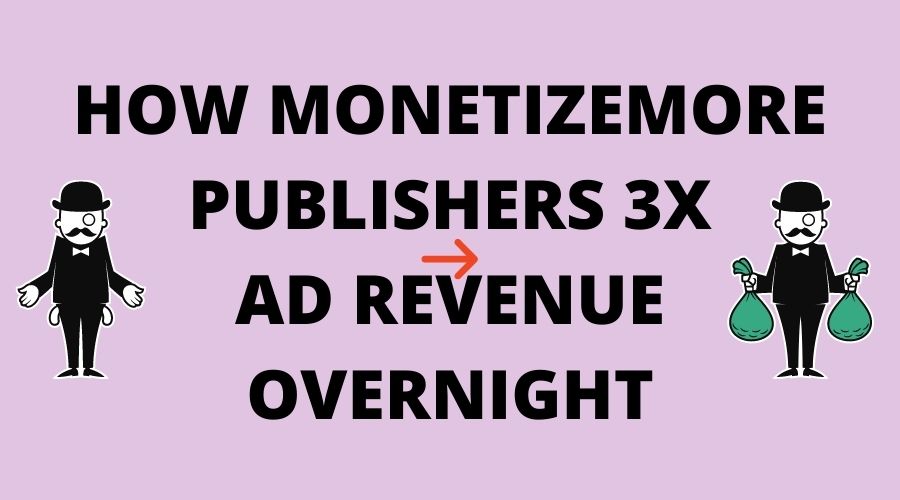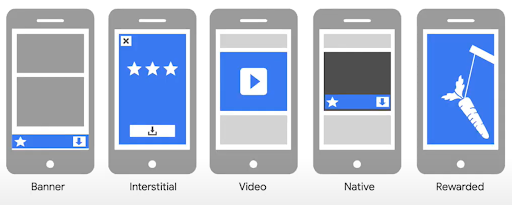Declining 2023 Ad Rates: Impact on Publishers’ Revenue Streams
In 2023, publishers have been grappling with a challenging reality: ad rates have taken a notable plunge compared to previous years, casting a shadow on their revenue streams. This downward trend has caught the attention of industry professionals, sparking discussions and concerns about the factors contributing to this decline. Understanding the underlying reasons behind the substantial drop in ad rates is crucial for publishers who are seeking to adapt and thrive in an evolving digital advertising landscape. By delving into the complexities of this situation, publishers can unlock insights that may empower them to navigate these challenging times and discover new avenues for sustainable growth.
Impact on Ad Rates with all this Publisher Competition Congestion
The online publishing landscape has witnessed a remarkable expansion in recent years, leading to a congestion of content creators and a proliferation of digital platforms. This surge in participants has significantly intensified the competition among publishers, ultimately contributing to the low ad rates observed in 2023.
The barrier to entry for online publishing (Thanks to ChatGPT:P) has significantly diminished, allowing a larger number of content creators to establish their digital presence. With the advent of user-friendly website builders, content management systems, and social media platforms, individuals and organizations can easily create and distribute their content. As a result, the sheer volume of publishers has soared, creating a crowded and highly competitive environment.
Moreover, the proliferation of digital platforms has compounded the congestion within online publishing. These platforms, ranging from social media networks to specialized content-sharing platforms, offer diverse avenues for content dissemination. They attract a vast audience and provide an alternative medium for content consumption. Consequently, publishers must contend not only with their direct competitors but also with the multitude of content creators vying for the attention of the same target audience.
The congestion in online publishing is amplified by the availability of vast amounts of content across various niches. As publishers compete for visibility and engagement, the audience’s attention becomes increasingly fragmented. This fragmentation makes it challenging for advertisers to reach their desired audience effectively, thereby diminishing the value of ad placements and leading to lower ad rates.
With more inflation comes reduced ad budgets
Ad budgets have experienced a drop due to ongoing global economic uncertainty. In times of economic instability, businesses often exercise caution and tighten their financial belts, leading to reduced advertising expenditures.
The current global economic uncertainty can affect consumer spending patterns. When consumers become more cautious about their purchases, businesses may perceive a reduced return on investment from advertising. As a result, they may allocate fewer funds to advertising initiatives to align with the diminished consumer demand.
Moreover, the evolving business landscape and the emergence of new marketing channels and strategies have further impacted advertising budgets. Digital advertising platforms, for instance, offer more cost-effective options, enabling companies to allocate funds to targeted online campaigns at the expense of traditional advertising channels. This shift in advertising priorities can lead to a redistribution of budgets, causing a decline in ad rates across various publishing platforms.
As ad inventory quantity goes up, the ad rates go down. More ads don’t mean more revenue.

Programmatic advertising refers to the automated buying and selling of digital ad placements. Instead of traditional methods where advertisers negotiate directly with publishers, programmatic advertising relies on algorithms and technology to match ads with available ad spaces in real-time. This automated process allows for more efficient and targeted ad placements.
With programmatic advertising, advertisers can precisely reach their desired audience, as the technology analyzes user data and behavior to serve relevant ads. However, as more advertisers and publishers embrace programmatic advertising, the supply of available ad spaces has increased significantly. There are now more ad slots than there are advertisers looking to fill them.
This surplus of ad inventory has created a competitive environment among publishers. Advertisers can choose from a wide range of available ad spaces and have more negotiating power, lowering ad rates. Publishers must adapt to this changing landscape by finding ways to make their ad spaces more attractive, such as offering better audience targeting or providing unique ad formats that capture users’ attention.
To summarize, programmatic advertising and automation advancements have led to a surplus of available ad inventory. The increased supply of ad inventory has given advertisers more options to choose from, which has ultimately led to a decrease in ad rates as publishers compete for their attention.
Ad Rates and User Experience: Impact of Engaging Content and Non-intrusive Ads
In today’s online ecosystem, users are accustomed to navigating through abundant digital content. As a result, their attention spans have shortened, and they have become more selective in the content they consume. Publishers that prioritize user experience by offering well-designed websites, fast loading times, and intuitive navigation have a higher chance of retaining users’ attention and engagement.
In parallel, advertisers recognize the importance of aligning their brand messaging with positive user experiences. They understand that intrusive or disruptive ads can lead to negative perceptions of their brand and result in users turning away from the content they offer. Consequently, advertisers are actively seeking websites that strike a balance between delivering their messages effectively and respecting the user experience.
To attract higher-paying advertisers and command better ad rates, publishers need to prioritize ad quality. This includes ensuring that ads are relevant, visually appealing, and seamlessly integrated into the website’s design. Non-intrusive ad formats, such as native ads that blend in with the surrounding content or well-placed display ads that don’t interrupt the user’s flow, tend to garner better engagement and acceptance from users.
Moreover, the rise of ad-blocking technologies has made it imperative for publishers to prioritize user experience and non-intrusive ads. Users who employ ad-blockers often do so to avoid disruptive or irrelevant ads. By focusing on providing a positive user experience, publishers can encourage users to disable ad-blockers, enabling them to monetize their content effectively.
Publishers that invest in creating engaging content, optimizing user experiences, and offering non-intrusive ads stand a better chance of attracting advertisers who value these aspects. By prioritizing these factors, publishers can enhance their revenue potential and build stronger relationships with advertisers in the highly competitive digital advertising space.
Are privacy Regulations hitting hard on Ad Rates?
Privacy has become a paramount concern for users and regulators alike. In response to mounting concerns regarding data privacy and consumer consent, governments and regulatory bodies have introduced more stringent laws and regulations. These measures aim to protect user data and empower individuals with greater control over their personal information.
As a result, advertisers now face limitations on collecting, using, and sharing user data for targeting purposes. Previously, advertisers could leverage detailed user profiles and behavioral data to deliver highly personalized and targeted ads. However, with the implementation of stricter data protection laws, advertisers must navigate a more privacy-conscious landscape that imposes restrictions on data usage and sharing.
These targeting limitations have implications for ad rates. Advertisers may no longer have access to the same level of granular targeting options they once enjoyed. The ability to deliver highly tailored ads to specific audiences may be curtailed, making it more challenging to achieve the desired reach and effectiveness. Consequently, advertisers may be less willing to pay premium rates for ad placements that offer limited targeting capabilities.
Publishers need to be aware of these shifting privacy practices and regulations to adapt their advertising strategies accordingly. They may need to explore alternative approaches to ad targeting, such as contextual advertising that relies on the webpage’s content rather than user-specific data. Publishers who prioritize transparency, consent management, and compliance with privacy regulations can build trust with users and advertisers, potentially mitigating the impact on ad rates.
Solutions
Focus on UX, AdOps & multiple content monetization revenue streams
Publishers have the capability to undertake various measures to combat low ad rates and enhance their revenue streams, but the involvement of an adtech partner can significantly assist in implementing these strategies effectively.
While publishers can independently focus on improving user engagement, optimizing site speed, and exploring alternative revenue streams such as native advertising or sponsored content, an adtech partner can bring specialized expertise, resources, and technologies to the table. Adtech partners possess in-depth knowledge of the advertising ecosystem and can provide valuable insights and guidance on implementing best practices.
An adtech partner like MonetizeMore can help publishers optimize their ad placements and ad formats, ensuring that they align with industry standards and maximize monetization potential. They can offer tools and solutions for ad optimization, including header bidding, ad targeting, and performance analysis, which can enhance ad revenue and overall user experience.
Additionally, adtech partners can assist publishers in navigating the complexities of programmatic advertising and automation. They can provide access to programmatic ad exchanges, demand-side platforms, and supply-side platforms, enabling publishers to reach a wider range of advertisers and effectively monetize their ad inventory.
Moreover, adtech partners often have established relationships with advertisers, agencies, and ad networks, which can lead to more lucrative ad opportunities for publishers. They can facilitate direct connections and partnerships that may not be easily accessible to independent publishers.
While publishers can certainly take steps to address low ad rates and explore alternative revenue streams, the expertise, technology, and industry connections an adtech partner brings can significantly enhance their efforts. Collaborating with an adtech partner can help publishers navigate the dynamic ad landscape more effectively and unlock additional opportunities for revenue growth.

| Benefits with an Adtech Partner like MonetizeMore | Challenges without them | |
|---|---|---|
| User Engagement | Access to expertise in optimizing user engagement strategies and best practices. | Lack of specialized knowledge and resources to effectively enhance user engagement. |
| Site Speed | Assistance in optimizing site speed for improved user experience. | Difficulty in identifying and implementing site speed improvements without specialized support. |
| Ad Optimization | Expertise and tools for ad optimization, maximizing ad revenue. | Limited ability to optimize ad placements and formats effectively without access to adtech solutions. |
| Alternative Revenue Streams | Guidance on exploring and implementing alternative revenue streams like native advertising or sponsored content. | Lack of industry connections and expertise to effectively diversify revenue streams. |
| Industry Insights | Access to industry trends, market insights, and evolving technologies. | Missed opportunities to stay updated on the latest developments and best practices in the adtech industry. |
| Relationships and Partnerships | Established connections with top advertisers, agencies, and ad networks, providing access to more lucrative ad opportunities. | Difficulty in establishing direct partnerships and accessing premium advertising opportunities independently. |
By partnering with an adtech company, publishers can leverage the expertise, resources, and industry relationships an adtech partner brings, enabling them to overcome challenges and unlock the benefits discussed above.
Split test with new ad formats to attract higher-paying advertisers and 10X ad rates.

Yes, experimenting with new ad formats like parallax, video, and interactive ads can attract higher-paying advertisers and potentially increase ad rates for publishers.
New and innovative ad formats have the potential to capture users’ attention, provide an engaging experience, and deliver brand messages more effectively. Advertisers are constantly seeking ways to stand out and connect with their target audience, and these new formats offer unique opportunities to achieve that.
Parallax ads, for example, create a sense of depth and movement, allowing for more visually captivating experiences. Video ads have proven to be highly engaging and can convey messages in a dynamic and immersive manner. Interactive ads enable users to interact with the content, increasing their involvement and creating a memorable experience.
By incorporating appealing ad formats into their offerings, publishers can differentiate themselves in the market and attract advertisers who are looking for innovative ways to engage their audience. Higher-paying advertisers are often willing to invest in these formats as they can yield better results in terms of brand exposure, user interaction, and conversion rates.
Advertisers value unique and captivating ad experiences and are often willing to pay more for placements that offer such opportunities. As a result, by offering these new ad formats, publishers can position themselves as providers of high-value ad inventory and negotiate better rates with advertisers.
However, it is important to note that the success of these ad formats depends on various factors such as proper implementation, alignment with the website’s content and audience, and user experience considerations which you can do with the partnership of MonetizeMore. So, what are you waiting for? Get back on the ad-optimization success path by getting started with us here!
Related Reads
https://www.monetizemore.com/blog/ad-revenue-forecast/
https://www.monetizemore.com/blog/mediavine-vs-adsense-vs-monetizemore-ad-revenue/
https://www.monetizemore.com/blog/what-are-the-highest-earning-ad-sizes/
https://www.monetizemore.com/blog/how-to-secure-5x-more-ad-revenue-in-2023/
source https://www.monetizemore.com/blog/my-ad-rates-dropped-how-do-i-stop-this/


0 Comments